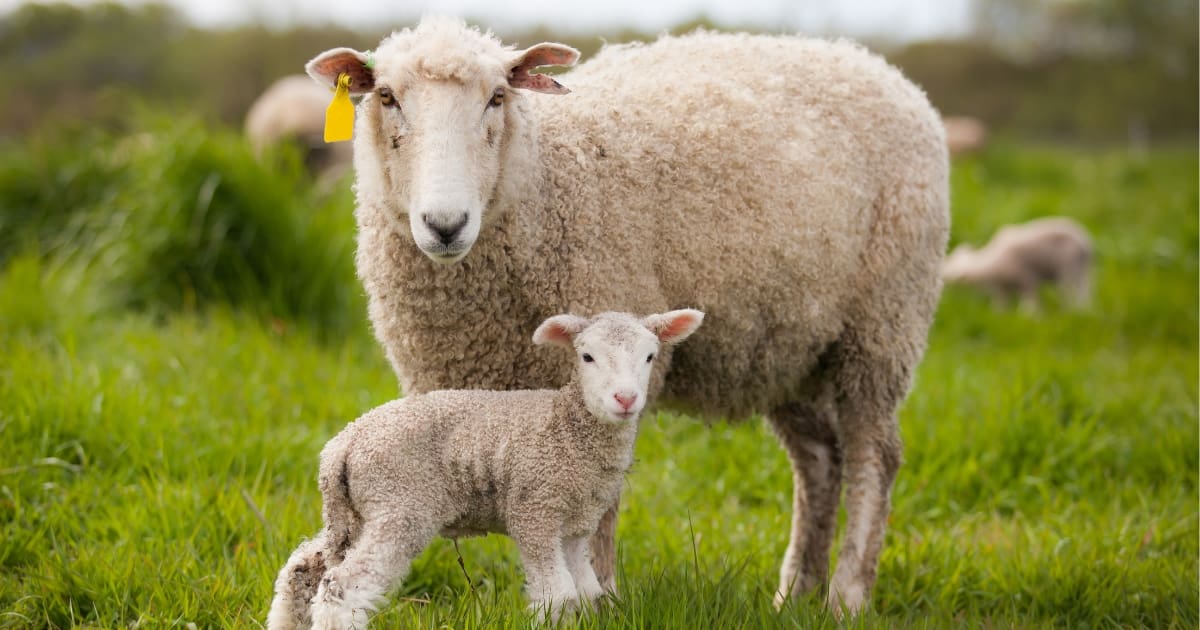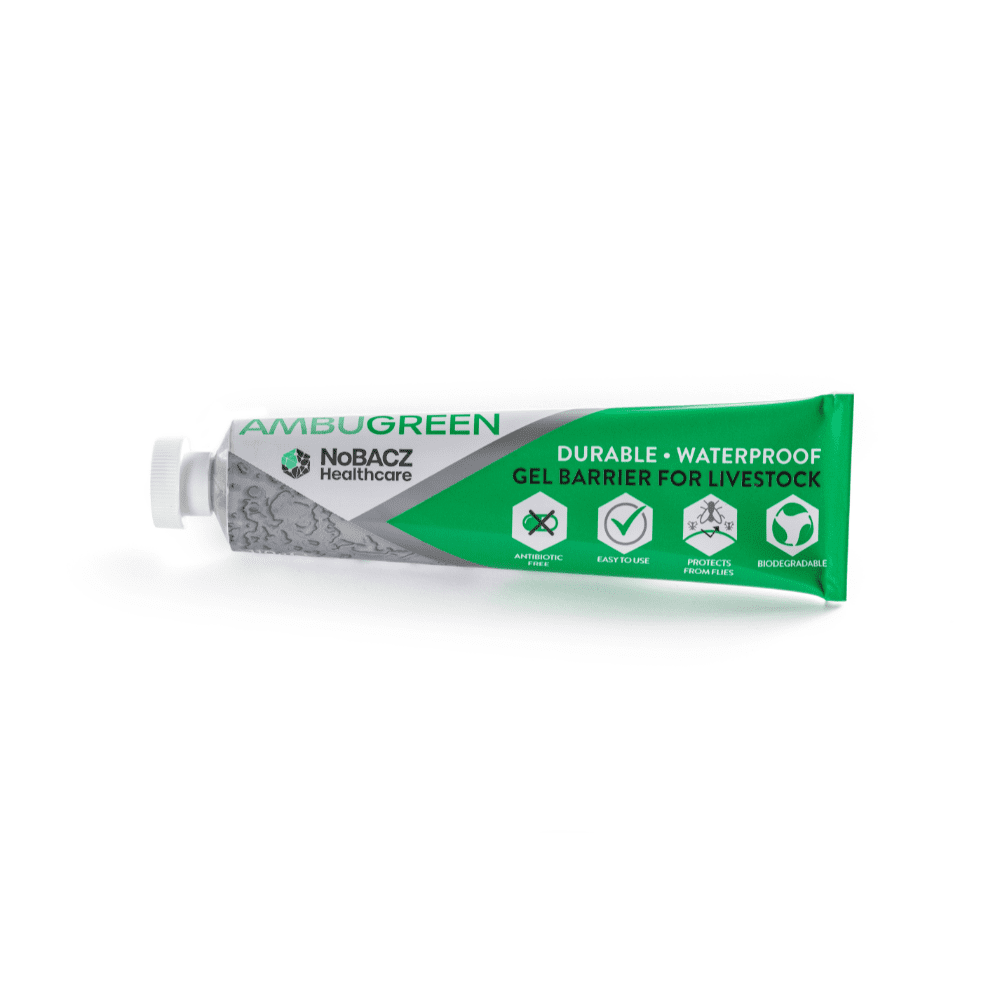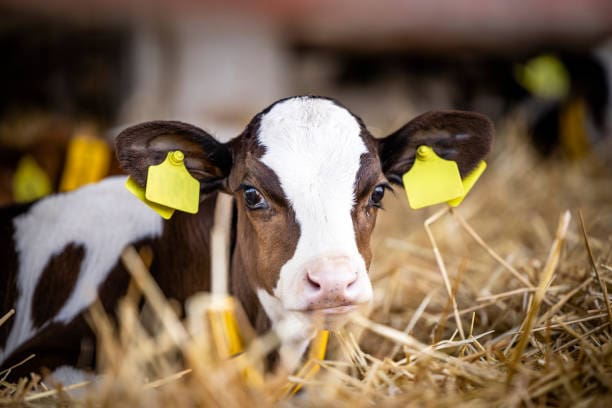

Preventing Navel Ill in Calves: The Role of Effective Navel Hygiene
Navel ill, or umbilical infection, remains a significant cause of poor calf health, reduced growth, and increased mortality on UK farms. But with proactive management and the right products, it’s a preventable problem.
What is Navel Ill?
At birth, the calf’s umbilical cord becomes a vulnerable entry point for bacteria. Until the navel dries and seals, it acts as an “open tube” into the calf’s body. Navel infections—also known as omphalitis—can begin with a swollen, hot, and painful umbilical stump. In more severe cases, infection can spread internally, leading to peritonitis, joint ill, meningitis, or even death within days¹.
Approximately 30 % of calves suffer from navel infections, regardless of breed². Many cases go undiagnosed, contributing to unexplained illness or death and lowering average daily liveweight gains by as much as 96 grams. The risk of mortality in affected calves is also estimated to be 2.5 times higher than in healthy calves³.
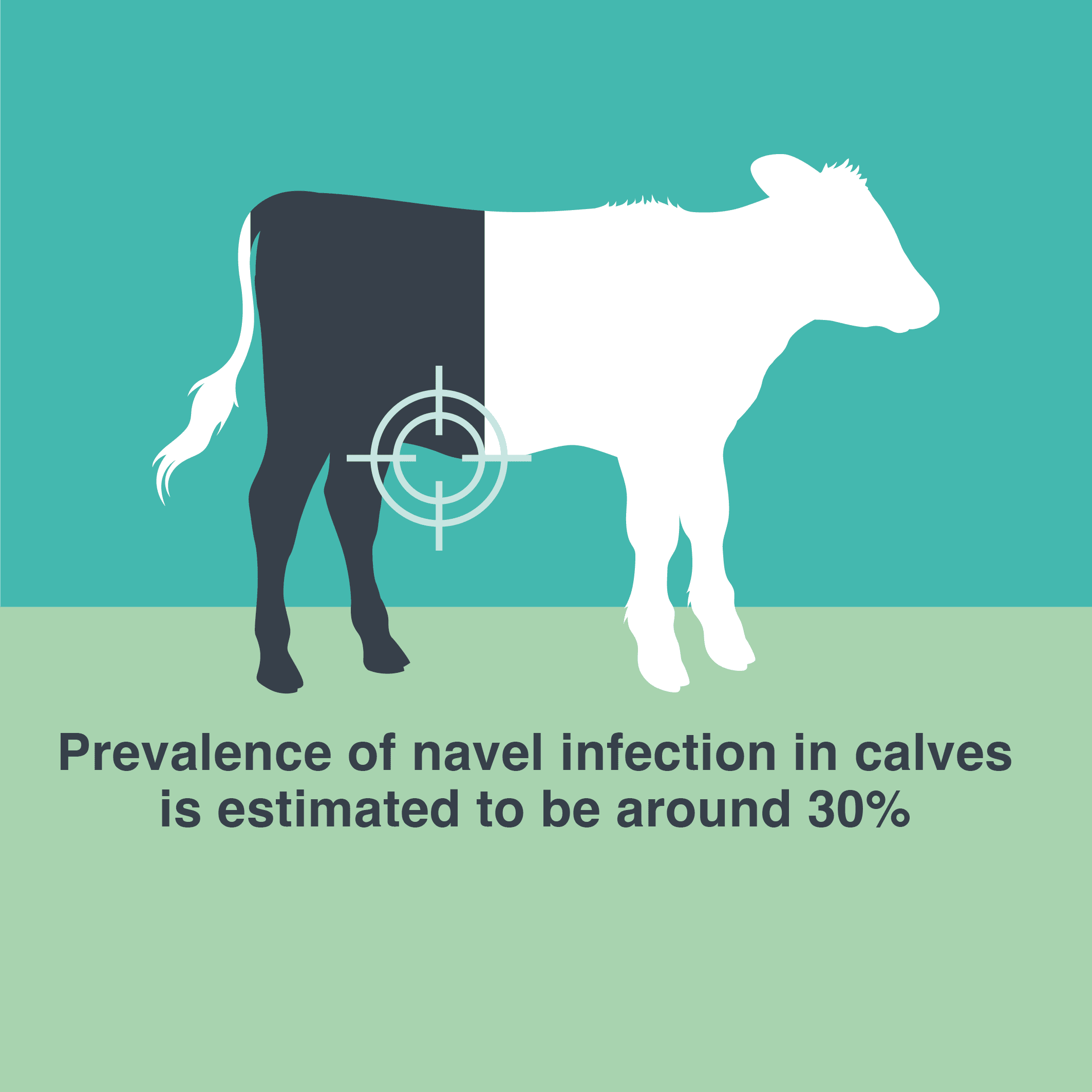
Key Risk Factors for Navel Infection
Environmental bacteria are the primary cause of infection, with risk factors including:
-
Wet or unhygienic calving environments
-
Difficult births (dystocia)
-
Birthweight over 50 kg
-
Short umbilical cords (< 3 cm)⁴
-
Lack of immediate navel disinfection
Calves without any navel treatment are more than twice as likely to develop navel ill.
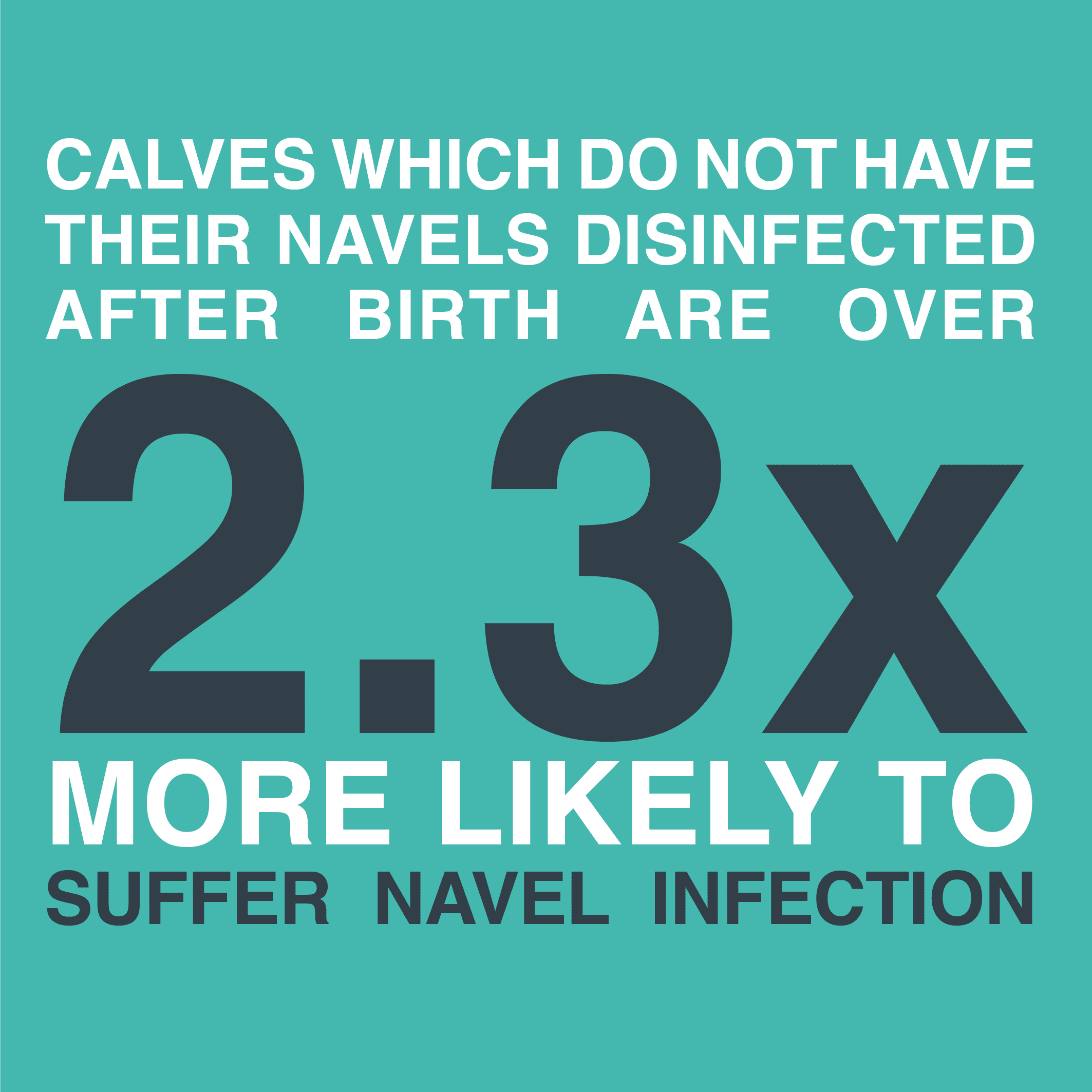
A New Approach to Navel Hygiene: NoBACZ Navel
NoBACZ Navel is an antibiotic-free, purpose-built solution designed to tackle this challenge head-on. It’s the first navel product to combine cleansing, rapid drying, and a waterproof physical barrier in one application.
Unlike iodine, which offers no lasting protection and can be easily washed away, NoBACZ Navel contains a patented blend of natural polymers and metal ions.
Real-World Results
A commercial beef suckler herd switched from double-dipping navels in iodine to using NoBACZ Navel during the 2025 calving season. No other management changes were made. The result? A dramatic reduction in navel infection cases—from 16 % down to just 1.56 %.
Fewer treatments meant improved calf health, better growth rates, and a significant reduction in antibiotic usage.
Other reported benefits included:
- Ease of application (it can be used as a dip or sprayed, and is supplied with a spray nozzle that attaches to the 500ml bottle)
- Visible colour (blue colouring means identifying where product has been applied is easy, helping to reduce product wastage)
- ‘Lick-deterrent’ properties (NoBACZ Navel has a bitter taste to deter licking – over-enthusiastic licking is a risk factor for navel infection)
The farm has committed to continuing with NoBACZ Navel, citing confidence in its performance and practical advantages.
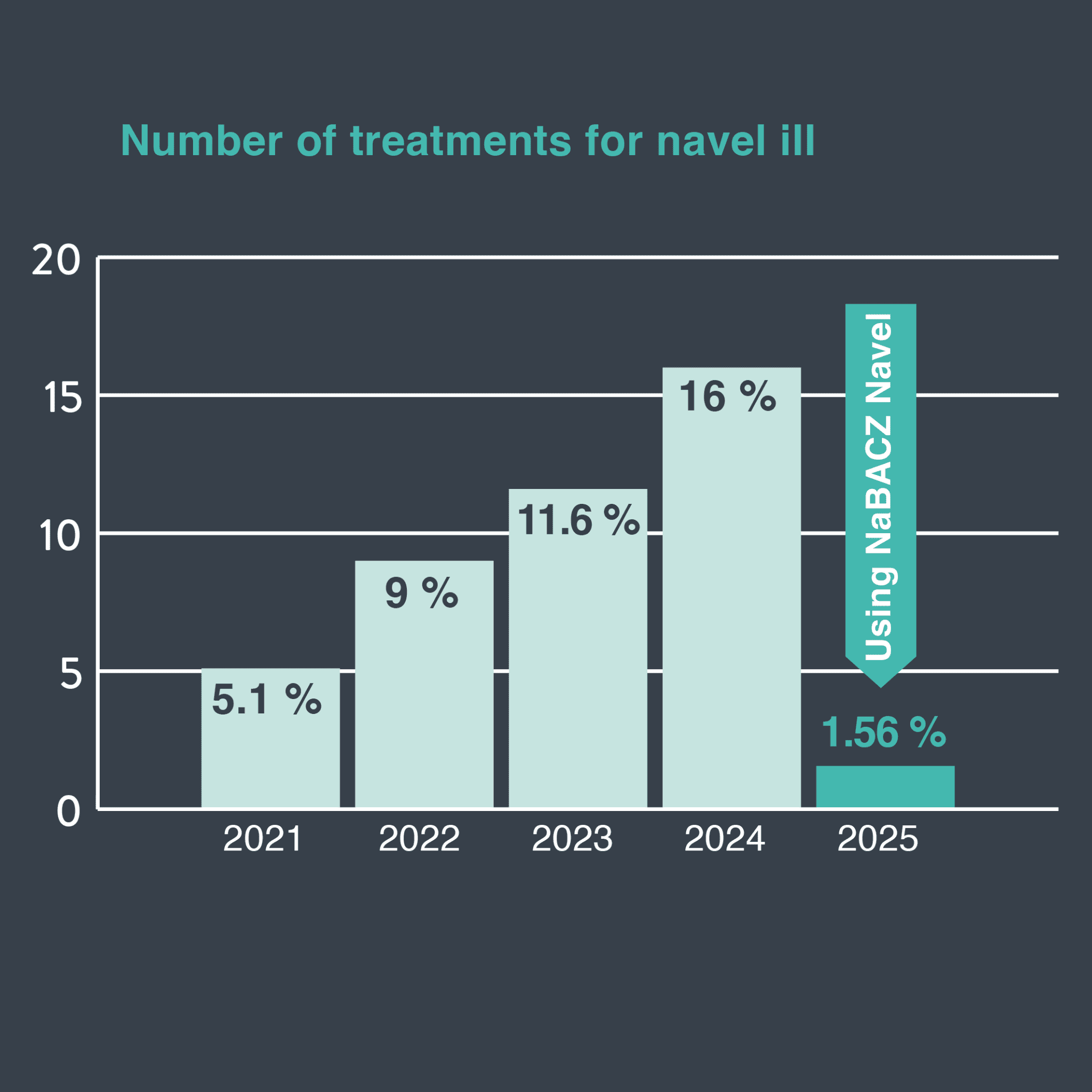
Supporting Data from Sheep
Although developed for calves, NoBACZ Navel was initially trialled in lambs. Independent research by FlockHealth Ltd across 6,840 lambs showed a 21 % reduction in mortality and improved eight-week weights compared to iodine-treated controls⁵.
For more information about NoBACZ Navel and how it fits into your calving protocols, visit our product page or speak to your vet about making the switch today.
(1) Perrot, F., Joulié, A., Herry, V., Masset, N., Lemaire, G., Barral, A., Raboisson, D., Roy, C., & Herman, N. (2023). Failure of Passive Immunity Transfer Is Not a Risk Factor for Omphalitis in Beef Calves. Veterinary Sciences, 10(9). https://doi.org/10.3390/VETSCI10090544.
(2) Meier, K. K., Stock, A., Merle, R., Arndt, H., Dachrodt, L., Hoedemaker, M., Kellermann, L., Knubben-Schweizer, G., Volkmann, M., & Müller, K. E. (2024). Risk factors for omphalitis in neonatal dairy calves. Frontiers in VeterinaryScience, 11, 1480851. https://doi.org/10.3389/FVETS.2024.1480851/BIBTEX.
(3) Perrot, F., Joulié, A., Herry, V., Raboisson, D., & Herman, N. (2024). Evaluation of risk factors of omphalitis in newborn beef calves with indoor housing. Preventive veterinary medicine, 227, 106191. https://doi.org/10.1016/j.prevetmed.2024.106191.
(4) Wieland, M., Mann, S., Guard, C. L., & Nydam, D. V. (2017). The influence of 3 different navel dips on calf health, growth performance, and umbilical infection assessed by clinical and ultrasonographic examination. Journal of Dairy Science, 100(1), 513–524. https://doi.org/10.3168/JDS.2016-11654.
(5) Lovatt, F. (2024). A randomised controlled trial to compare the use of a novel product (NoBACZ Navel) with strong iodine to protect navel and ear tag sites of neonatal lambs (with some additional data on neonatal calves). British Cattle Veterinary Association Congress. October 17- 19, The Celtic Manor Resort, Newport, Wales.
